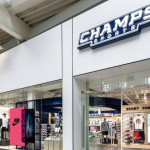Standard & Poors lowered the debt ratings of Varsity Brands, the parent of BSN Sports, Varsity Spirit and Herff Jones. The rating agency said the company continues to perform below its expectations due to high operating expenses, resulting in weaker-than-expected profitability and adjusted leverage above 10 times.
The issuer credit rating on Varsity Brands was lowered to ‘B-‘ from ‘B’ and its issue-level rating on the company’s first-lien term loan to ‘B-‘ from ‘B’. The recovery rating on the first-lien term loan remains ‘3’.
S&P said the downgrade reflects Varsity Brands’ weakening operating performance in the past few quarters and continued deterioration in its credit metrics. S&P noted that the company was purchased by a new financial sponsor, Bain Capital, in 2018, leading to debt to EBITDA in the mid-8x area after the close of the transaction.
S&P said, “The company has been unable to deleverage since the transaction and operating performance continues to fall short of our expectations. While sales are generally in line with our previous forecast, margins compressed significantly because of an accelerated pace of recruiting salespeople and investments in technology. It increased the size of its sales force by 20 percent in the past 12 months. The company also made significant investment to the technology platform, such as an order tracking system. Due to higher-than-expected operating expenses, the EBITDA margin contracted as of the 12 months ended June 30, 2019 from post the transaction in 2018. The company’s leverage for the 12 months ended June 30, 2019 increased to the mid-10x area.
“The negative outlook reflects the risk that the company might not be able to stabilize its cost structure by the end of 2019, leading to an unsustainable capital structure. Cash flows will not stabilize unless it can improve the
productivity of its sales force and it achieves benefits from its investments in technology. This could lead to adjusted leverage remaining close to 10x.
“We could lower the rating within the next few quarters if the company were unable to improve profitability, free cash flow further weakened and we determined the capital structure were unsustainable in the medium term because it could eventually lead to a distressed exchange or if EBITDA coverage of interest were sustained in the low 1x area. This could happen if the company were unable to reduce cost structure or gain traction with its sales people.
“We could revise the outlook to stable if the company strengthened its profits and free cash flow, and EBITDA interest coverage approached 2x. This could occur if the new sales forces fully ramped up and the company started to benefit from the technology investment and cost-saving initiatives.”













